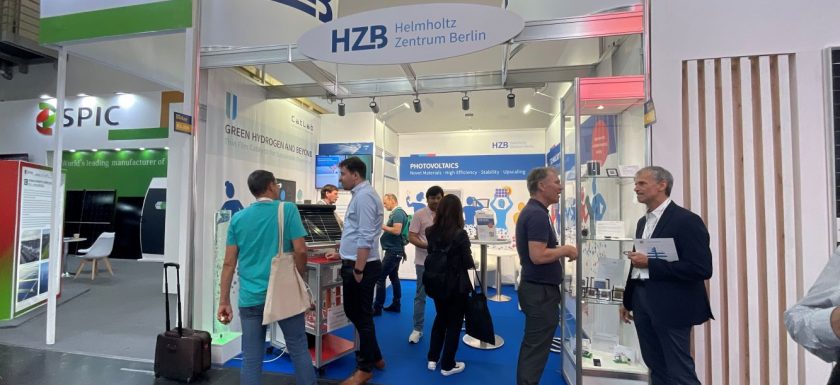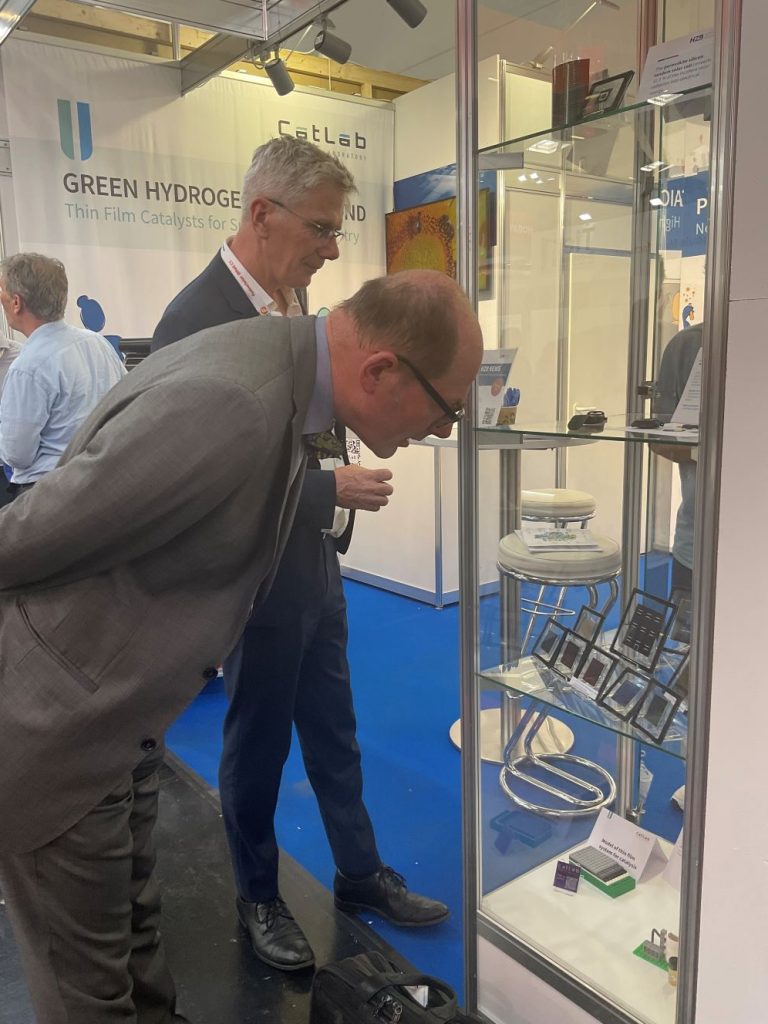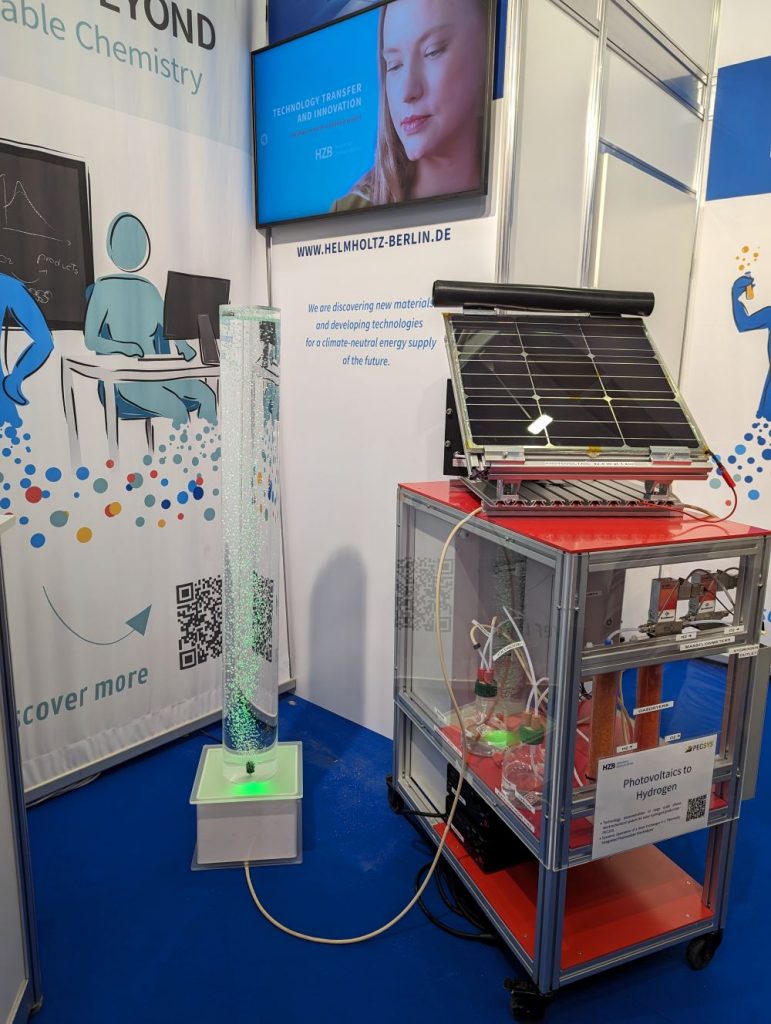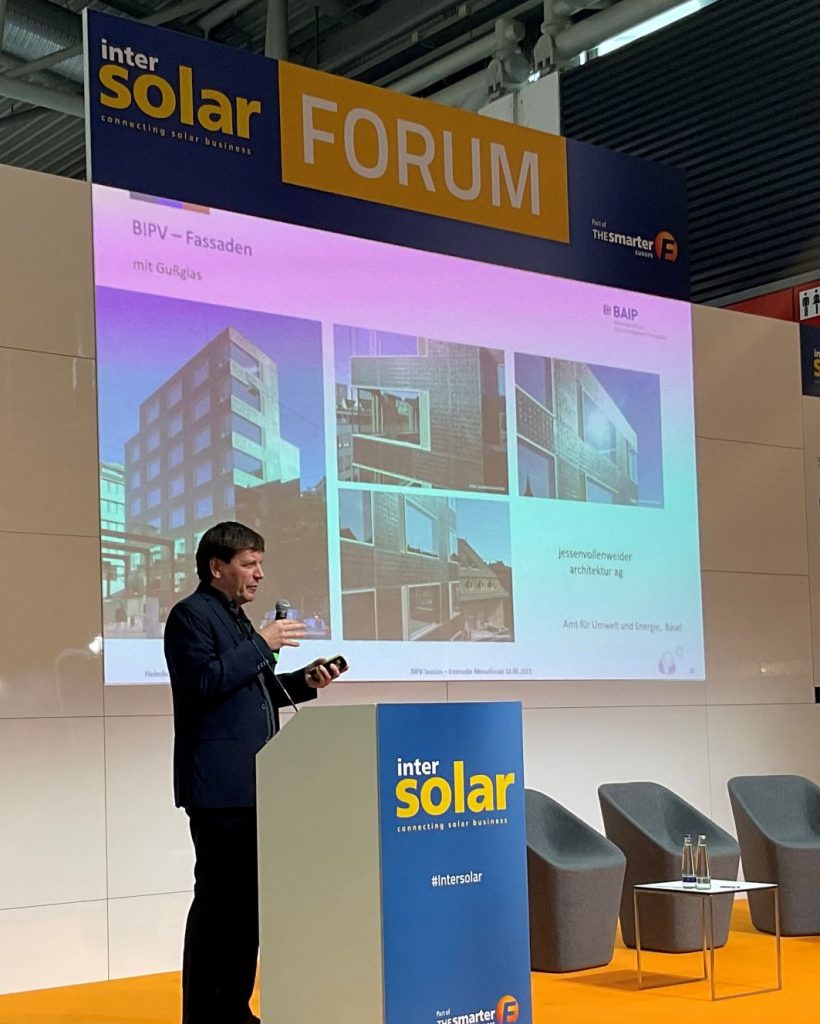
The Intersolar trade fair, held in Munich from June 14th to 16th, served as a global platform for experts, industry leaders, and enthusiasts to explore the latest developments in the solar energy sector. Intersolar is part of “The smarter E,” four different exhibitions, Intersolar, ees, Power2Drive and EM-Power, focusing on renewable energy and highlighting groundbreaking advancements in the field – this year under the motto: “Creating a new energy world”. Helmholtz-Zentrum Berlin (HZB), participates every year to Intersolar and presents its research expertise and technological achievements.

(©HZB/Sophie Spangenberger)

(©HZB/Ribal Zeitouni)

(©HZB/Sophie Spangenberger)
The HZB booth at Intersolar Europe 2023
At HZB’s booth this year, we presented the main aspects of our current research on renewable energy, especially photovoltaic technologies.
We showcased our perovskite-based tandem solar cells, which held the world efficiency record with a certified efficiency of 32,5% until spring 2023, and minimodules manufactured via slot die coating. Janardan Dagar, staff scientist at HZB and responsible team lead for conducting research on large area perovskites, tells us: “We are producing a prototype which is the size of 5 cm x 5 cm area – a single junction slot die coated semi-transparent mini-module. And the idea is to make it applicable for industrial upscaling.”
Additionally, we highlighted our activities on building-integrated photovoltaics (BIPV) with our consulting office for building-integrated Photovoltaics (BAIP). Björn Rau, physicist at HZB and responsible for BAIP, emphasizes the importance of addressing explicitly the construction industry: “We analysed the situation on the market, and we found that in the field of building-integrated photovoltaics, it is not necessarily only the product that needs to be developed or the solar module that needs to be optimised for integration into the building envelope, we found that the main problem why we see not enough BIPV is that the construction industry knows little about it.”
Complementing this, we showcased CatLab (Catalysis Laboratory), a Berlin-based research platform to advance the development of novel catalyst materials (together with Fritz-Haber-Institute of the Max-Planck Society and the Max-Planck Institute for Chemical Energy Conversion). Steffi Hlawenka explains: “For transition to green energy, we also must think about chemical energy storage and transport. For that, hydrogen is a promising material. Especially in direct connection with renewable energy sources like solar energy, the so-called called photovoltaics-to-fuels technology portraited by our exhibit”.
Buzzword Technology Transfer – what does that mean?
HZB is dedicated to the Helmholtz mission, and one key point is technology transfer. “To transfer gained scientific knowledge to applicable usage”, in the words of Jan Elmiger, responsible for technology transfer at HZB. As a publicly funded institution with access to cutting-edge research facilities like BESSY II, we strive to centre our scientific expertise on research to benefit society. Through technology transfer, our research findings will transform into real life solutions for economic and industrial use. Jan Elmiger explains: “In collaboration with industry partners, we develop commercial prototypes, license our technologies for commercial usage, or even establish spin-off companies.” This symbiotic relationship enables HZB to make a lasting impact on the solar energy sector and contribute to its evolution. By leveraging expertise and fostering collaborations, HZB actively contributes to a greener, more sustainable future.
Why Intersolar?
Participating in trade fairs like Intersolar offers several advantages for HZB and the scientific community. Firstly, it allows us to showcase our innovations and research outcomes to a large and diverse audience, including industry representatives and potential collaborators. But also, we can present our research to young scientists. This visibility not only helps us to establish valuable connections and partnerships. We can show young scientists, interested in pursuing research, opportunities for their academic career at HZB. Niklas Albinius, scientist at BAIP, sums it up well: “We want to communicate what we do, mainly science, and technologies.” Additionally, trade fairs provide a platform for personal contacts, knowledge exchange, enabling us to stay up to date on the latest industry trends, challenges, and demands. This exchange helps us to set our research priorities with real-world needs, ensuring that our scientific efforts have a meaningful impact on society.
For further information on Intersolar, you can find the official website here.
